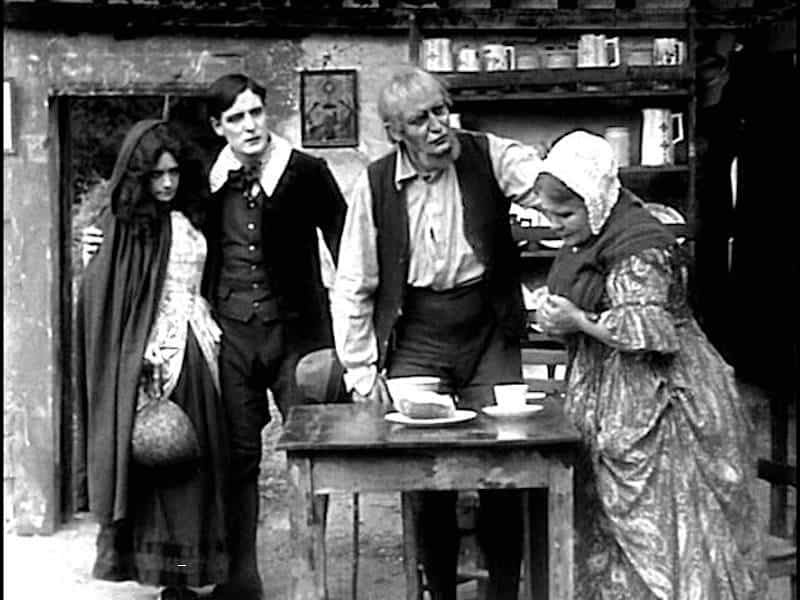
Short Starts typically presents a weekly short film from the start of a filmmaker or actor’s career. This week we present short films from the start of Irish cinema.
While St. Patrick’s Day is technically specifically a holiday to honor St. Patrick, because he’s the patron saint of Ireland the occasion has become a time for celebrating all things Irish. For many of us, that means wearing green, drinking Guinness and/or Jameson (and/or Harp, Kilkinney, Bulmer’s, Smithwick’s, Bailey’s, Old Bushmills … alcohol in general) and blasting Dropkick Murphys while drunkenly attempting to/mocking stepdance.
For a few of us, it’s also a moment to recognize Irish cinema, and by that I don’t just mean Darby O’Gill and a bunch of IRA/”Troubles” dramas (though many of these are great). Maybe it means something by one of the McDonagh brothers (like Martin’s foreign-set In Bruges or John Michael’s domestically placed The Guard) or any one of the Roddy Doyle Barrytown Trilogy adaptations (if you’ve only seen The Commitments, get to Stephen Frears’ The Snapper and The Van too).
You’re also encouraged to watch some shorts, particularly since Ireland is a great producer of shorts, many of which go on to Oscar consideration like Martin McDonagh’s Six Shooter, which won in 2006, and recent nominees Pentecost, The Crush, The Door, New Boy, Give Up Yer Aul Sins and Fifty Percent Grey. And we can go all the way back to 1900 for the beginning of short films shot and/or produced in the country. Check out a handful of these early historical pieces between then and 1913 after the jump.
Queen Victoria’s Last Visit to Ireland (1900)
There were a number of actuality films – or early newsreel pieces – made for Victoria’s rare and final trip to Ireland in April of 1900, just months before her death. Here is one such clip, courtesy of British Pathé, in which Her Majesty is riding in an open carriage during a parade. A similar film can be seen in more close up yet attributed to a visit in 1897, a year she wasn’t in Ireland (prior to 1900 she was last there in 1861).
Whaling Afloat and Ashore (1908)
Notable for being such an early example of edited documentary cinema, British filmmaker Robert W. Paul traveled to Ireland to make a few nonfiction works around this time. The one below is shot from a boat and then at port and features Irish and Norwegian whalers in their trade and then dancing and at play.
A Lad from Old Ireland (1910)
Regarded as the first true Irish fiction film, it’s in fact an American production directed by Canadian-born Sidney Olcott of the Kalem Company (and of Irish descent), who also stars, and written by its lead actress, Gene Gauntier (also a director in her own right). It’s probably more famous for being the first U.S. fiction film shot on location – Olcott recognized the large Irish audience back home – and noteworthy for being an immediate representation of the common story of immigration from Ireland to America. Olcott and his team went on to make a few shorts in Ireland (see the next two entries). Sadly, the copy below does not feature English titles. It is, however, remarkably well preserved otherwise.
Rory O’More (1911)
This time Olcott co-directed with Italian filmmaker Robert G. Vignola and Gauntier adapted Samuel Lover’s novel, which is about the titular 17th century noble who helped lead the Rebellion of 1641. They for some reason updated the true story, placing O’More in 1798. The film, which was very successful back home, wound up upsetting British authorities and nearly got Olcott and company expelled from Ireland. The controversy did convince them not to return to Ireland for another trip, heading to the European continent, North Africa and the Middle East for their next location shoots.
You Remember Ellen (1912)
This short by Olcott and Gauntier is adapted from a poem by Thomas Moore, who is documented as being paid three pounds for the rights. The story, like an earlier incarnation of, say, Coming to America, is about a Lord who pretends to be a peasant, finds a wife and then reveals that she is now a Lady. A nice little fairy tale:
